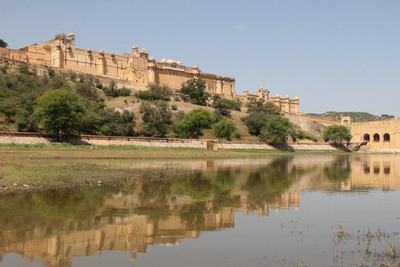Home > Asia > India > About



India
India is home to one of the oldest and largest civilizations in the world. India, a world in itself, no where else can one find such immense diversity with beauty, innocence and rich culture. Words cannot describe 3.2 million sq. kms of the India subcontinent. Pictures can not capture the majestic Himalayas, Golden deserts, regal palaces, magnificent mosques and chruches, exotic beaches and above all her beautiful people with their languages & dialects, rituals and traditions.
Location
Set apart from the rest of Asia by the supreme continental wall of the Himalayas, the Indian subcontinent touches three large water bodies namely the Bay of Bengal to the east, the Arabian Sea to the west, and the Indian Ocean to the south. From its northermost point, India extends 2,000 miles to its southern tip. The northern border is dominated by the Himalaas, the world's highest mountain chain. Following the sweeping mountains to the northeast, its borders pass between Nepal, Tibet, Bangladesh and Bhutan, then spread out aain to meet Myanmar.
Visas
All visitors to India require a tourist visa. A restricted area permits is required by certain border districts. These may be obtained from Indian missions abroad or Government agencies in India.
Immunisation
A valid certificate of vaccination against yellow fever is required for visitors coming from Africa and South America.
Climate
Because of India's size, its climate depends not ony on the time of year, but also the location. In general, temperatures tend to be cooler in the north, especially between September and March. The south is coolest between November to Janurary. In June, the southwest monsoon brings heavy rains to the west coast. Between October and December the northeast monsoon appears in the Bay of Bengal, bringing rains to the east coast.
When to travel
India has 5 seasons: spring, summer, monsoon, autumn and winter.
The monsoon hits different regions at different times as it sweeps from the Indian Ocean to the Himalaya, affecting north and central India from from May to September. In the south the monsoon generally lingers into October. There are advantages to be gained by travelling off-season - particularly in Rajasthan which is largely dry - as hotels are better value and monuments are quieter. The western ranges of the Indian Himalaya are also generally best visited during this time to escape the beat and rains on the plains. Between October and March the daytime temperature ranges between 25C-30C falling in the evening and overnight to between 18C-22C. After the monsoon, the air is dry, making the heat more bearable and reducing the humidity.
Accommodation
Its rich history has bequeathed India with a wonderful choice of hotels, and our regular visits allow us to find the best accommodation to enhance your experience. Many of the royal families of Rajasthan have opened the doors, and converted palaces in the cities as well as those throughout the Aravalli Hills allow you to absorb the regal atmosphere. Such has been their popularity, "new palaces" have been constructed - larely by the Oberoi group - with an emplasis on luxury and high qualilty service. As well as the luxury hotels, there are boutique spas, converted tea planters' cottages, hill station retreats and beach bungalows.
Clothing
Summer: light cottons. Warm clothes are advisable for a trip to the mountains.
Winter: Light woolens for North India and heavy woollens for the mountains.
Culture & People
It is impossible to speak of any one Indian culture, although there ae deep culture continuities that tie its people together. English & Hindi are the main languages of trade and politics, but there are fourteen official languages in all. There are twenty-four languages that are spoken in different parts of the country, and countless other dialects. Religion is central to Indian culture, and its practice can be seen in virtually every aspect of life in the country. Hinduism is the dominant faith of India, serving about 80 percent of the population. Ten percent worship Islam, and 5 percent are Sikhs and Christians; the rest are Buddhists, Jains and others.
|
|---|
Newsletter Subscription: 訂閱最新旅遊資訊
Site Map · Privacy Policy 私隱政策(只附英文版)
© 2020 Exotic-Holidays.hk · All Rights Reserved.
![]()